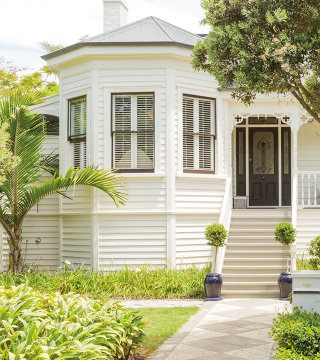Glossary
A
Agreed value
The amount agreed between the customer and insurer when the policy is first taken out. This is the maximum amount that the insurance provider will pay if you have an accident or your vehicle is stolen. The agreed value should be set at the amount it would cost to purchase the same vehicle again. When you make a claim, there may be deductions from this value like your excess or any outstanding premium. This figure is reviewed by your insurer each renewal, so it's a good idea to check you are happy with the value each time your policy renews. You can find an in-depth explanation of agreed value in our blog.
Accident
A sudden, unintended and unforeseen occurrence.
Accessories
Things which have been added to your car but don’t enhance its performance, like stereos, mag wheels and navigation systems.
Apportionment
The process of allocating damage across multiple events, based on which event caused the damage.
C
Claim
When you tell us about the accidental damage to or loss of your insured property (your car, house or possessions) and you ask us to reimburse you for it. A claim includes where we will pay for your liability only.
Cover
The insurance we provide to look after your belongings.
Common materials and methods
Building materials and construction methods normally used within the New Zealand building and construction industry at the time of reinstatement.
Contract Works Insurance
Typically home insurance policies exclude damages caused by renovations or construction work being done to the property; therefore contract works insurance is required. It provides cover for physical loss or damage (to permanent or temporary construction works) at the contract site or materials in transit to the site.
Consequential loss
Loss of value or additional expense arising as a consequence of an event; e.g. the cost to replace undamaged property to create a uniform appearance.
Current value
The market value of the home immediately prior to the accidental damage, with due allowance for age, wear, tear, depreciation and degree of maintenance.
Customer Manager
Customer Managers at AA Insurance look after you when you make a claim. They’ll keep you fully informed and make sure things stay on track and are hassle-free.
D
Depreciation
Taking age, use and condition into account when establishing what something is worth immediately before it was damaged or lost.
E
Event
A sudden, accidental and unforeseen occurrence that causes loss that is not intended or expected by you. You can find an in-depth explanation of insurance events in our blog.
Exclusion
A provision in a policy that means certain circumstances are not covered.
Excess
When you make a claim, you pay a small part of the cost and we pay the rest. Your part is called the excess. The cost of your excess depends on a number of factors. You pay an excess only when you make a claim. You can find an in-depth explanation of excess in our blog.
EQC Cap
Your home insurance cover with your insurer is triggered once the cost of the damage to a home from any one event reaches the maximum amount the EQC will pay - $300,000 (excl GST).
I
Insured
The person named on an insurance policy. Most often, this is the person who owns the property. If you want to insure an item which you and another person own together, make sure to tell us so that we can name both of you on your policy, and both of you can make a claim or changes to your insurance.
Indemnity value
The current value of an item, taking into account its age and condition at the time of loss or damage.
L
Liability
When you’re legally responsible for damaging someone else’s property. For example, if you crash into someone’s fence, you’re liable, or legally responsible for the cost of repairing the fence. You can find an in-depth explanation of legal liability in our blog.
Lapsed policy
A policy terminated because of non-payment of premiums, or that has expired at the end of the period of cover without renewal.
LIM
A Land Information Memorandum (LIM) is the information held by the Council about an individual property. As a result of the earthquakes, new information to be placed on LIMs will include land zoning, technical categories, updated floor levels, whether a property has a section 124 or other Building Act notice, and information on liquefaction risk.
Loss Adjuster
A professional employed to survey and assess the damage and recommend the most suitable methods for repair.
M
Modification
Things which have been added to your vehicle to change its performance, like a turbo upgrade, blow-off valves or upgraded mufflers.
Market value
The reasonable retail value of your asset immediately before it was damaged or lost. You can find an in-depth explanation of market value in our blog.
N
Natural Disaster
Earthquake, natural landslip, volcanic eruption, hydrothermal activity, tsunami or fire resulting from any of these. It does not include any gradual or slowly moving natural landslip.
No fault, no excess
If you’re in an accident while driving your vehicle that wasn’t your fault and you can identify whose fault it was, you may not have to pay any excess. Please see your policy document for more details.
O
Other driver
The driver of the other vehicle in the accident.
P
Period of Insurance
This is the time that your cover will be active with us, unless your policy is ended earlier (for example, if your policy is cancelled). Your policy schedule notes the dates of your period of insurance.
Premium
The amount you pay for insurance. What you pay depends on the type of insurance you want and the likely risk of damage or loss to your possessions.
Policy
This is your insurance contract with us. It includes your policy documents and your most recent policy schedule, the information you have provided in your application or declaration, and any information you provide us regarding any change in circumstances.
Policy document
This explains your insurance cover in detail and includes information on what you are and aren't covered for, the features and benefits of your policy, as well as your responsibilities and how to make a claim. You can find your policy documents here.
Policy schedule
This is a detailed record of what you've insured with us. You'll receive a policy schedule when you start, renew or make a change to your policy. This document is specific to your policy, and includes information such as the type of cover you've chosen, your excess amount, and the premium you pay. Your policy schedule also lists any optional extras you've added to your policy and notes the details of any event limits that may apply.
Q
Quality Repairer Network
A select group of skilled repairers we’ve chosen to service our customers’ vehicles. We provide a lifetime repair guarantee on all the repairs made by our Quality Repairers.
R
Renewal
An insurance policy generally covers a 12-month period. Before your period of insurance ends, we’ll send you a renewal notice that is an offer of insurance with us for another year.
The notice details the terms of your insurance policy for another year, such as your premium, amount of cover, agreed value, excess and so on. By paying your renewal premium, you accept this new agreement. You can find more information about what to expect at renewal in our blog.
Reinstatement report
Provides the estimated costs to repair/rebuild each room, including measurements and building materials used in the property.
S
Scope of Works
Detailed costing of the reinstatement work that needs to be carried out on the property.
Sum insured
The maximum amount that we’ll pay in the event of a total loss on your contents policy, or the maximum amount we’ll pay for your home or landlord policy in the event of a natural disaster. Your sum insured is shown on your policy schedule, and you should review this value at each renewal of the policy. You can find an in-depth explanation of sum insured in our blog.
T
Total loss
When your property has been damaged to an extent that we don’t think it can be economically or safely repaired. You can find an in-depth explanation of total loss in our blog.
Third Party
The other person involved in the accident.
U
Uninsured driver
A driver who damages your car or property and doesn’t have insurance of their own.



